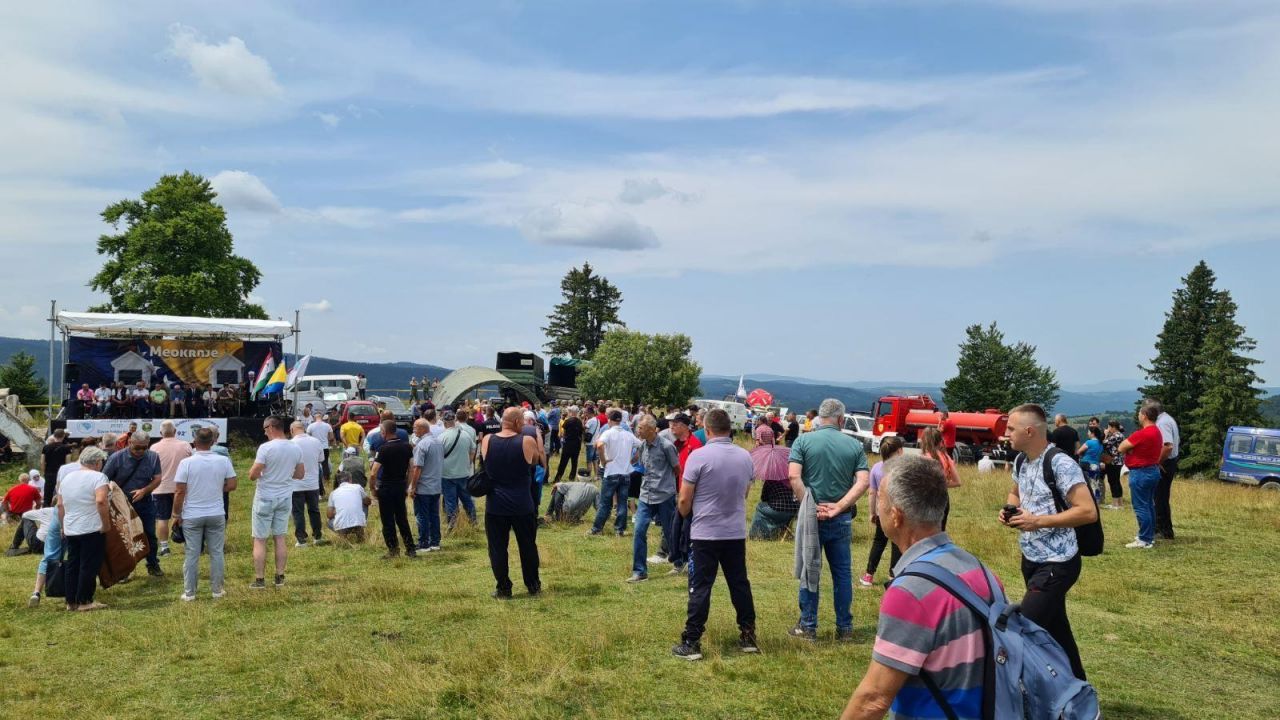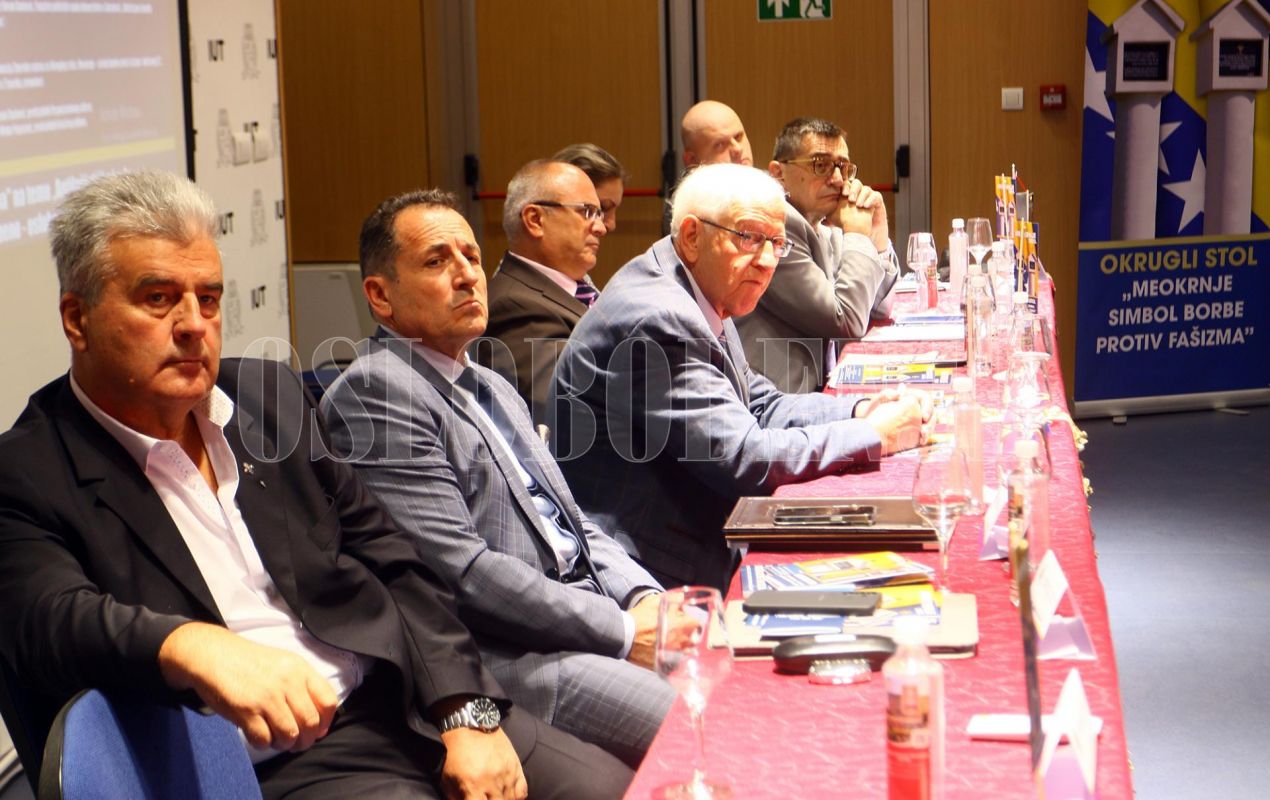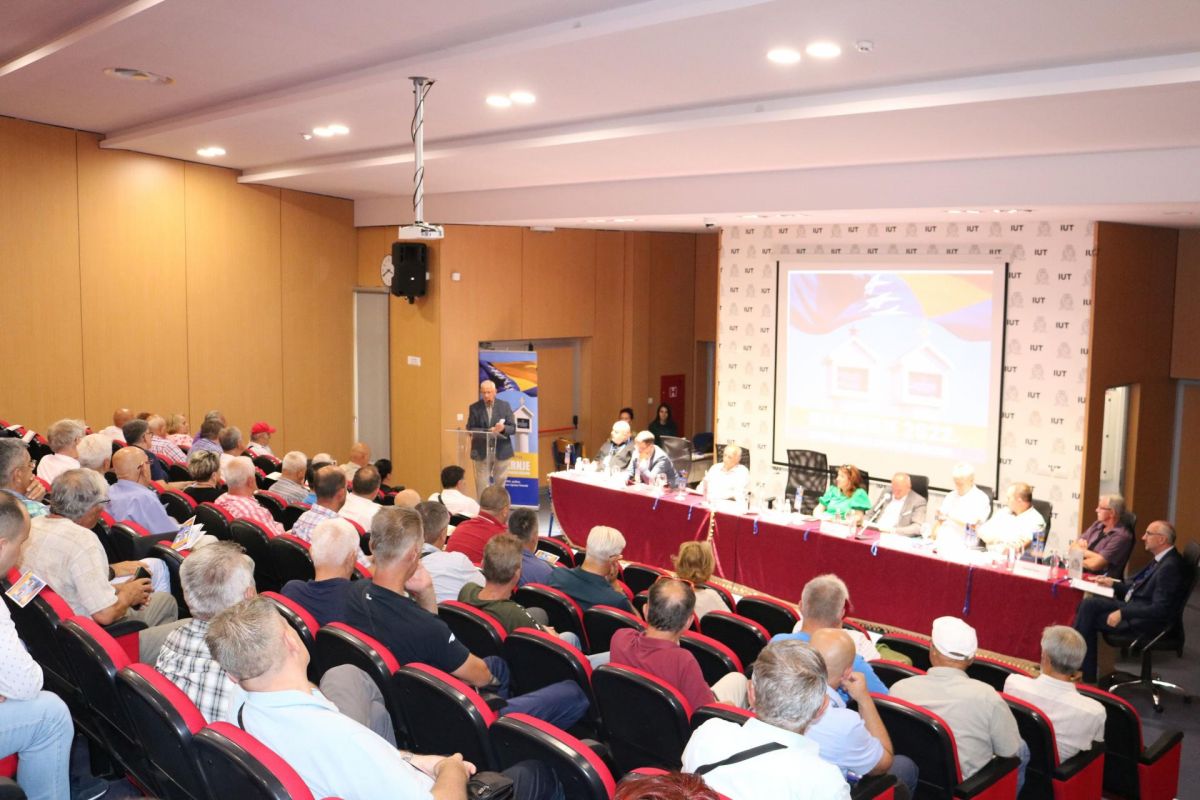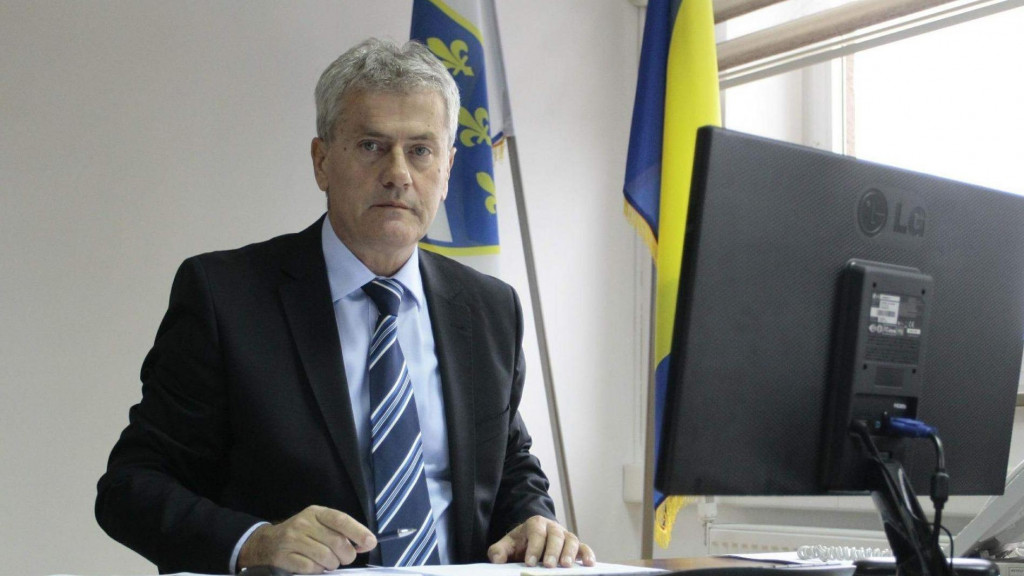Prof. dr. Rasim Muratović for Oslobođenje
In the introductory part of the Collection, signed by Amela Lolić and Admir Hadžiemrić, among other things, it is written that Meokrnje, the slope of the Vlašić mountain, is an area that for many years, due to the events that took place there, symbolizes the fight against fascism and neo-fascism in Bosnia and Herzegovina. The commemoration of events on Meokrnje has been going on since 1947, when July 4th - Day of Fighters - was marked with a hiking trip for the first time in the area of the municipality of Travnik. The significance and deaths of the members of the Travnica and Zenica partisan detachments who died on Meokrnje in the fight against the occupiers and domestic traitors in the Second World War were dignified.
The socialist period saved Bosnia and Herzegovina from the territorial division, then between Serbia and Croatia, just as the Austro-Hungarian occupation in 1878 saved it from the division between Serbia and Montenegro
It was also in Meokrnje during the 1992-1995 war. many lives were lost, and it played a significant role in the defense of the Travnica region. In September 1992, Meokrnje became the first mountain elevation liberated by the Army of the Republic of Bosnia and Herzegovina. War activities 1992-1995. in Meokrnje, they destroyed the monument erected in memory of the members of the Travnica and Zenica detachments, and the monument was restored in 2017, and next to it, an identical one was built for the members of the Army of the Republic of Bosnia and Herzegovina as a permanent memory of the two wars and the anti-fascist struggle of the people of Travnica who stood in defense of Bosnia and Herzegovina. These two monuments symbolize the fight against fascism, and at the same time they are a warning and a reminder to future generations of the war and war activities and the fight of patriots for the state of Bosnia and Herzegovina.
The bearers of the activities within the organization of the Meokrnje manifestation are: the Union of Anti-Fascists and Fighters of the National Liberation War of SBK/KSB and the Organization of Demobilized Fighters of the Defense-Liberation War 1992-1995. central Bosnia, with the support of the Municipality of Travnik, the Government of the SBK/KSB and numerous non-governmental organizations from the area of the Municipality of Travnik that continue with the tradition and nurturing of the culture of memory of the anti-fascist struggle and the sacrifices of Bosnian patriots who died in both wars. The Meokrnje event is recognizable by its anti-fascist messages identical in both significant periods of the history of Bosnia and Herzegovina - that numerous inhabitants of our country were on the side of justice and the civilized world in the battle of good against evil. As part of the Meokrnje 2022 manifestation, a round table "Meokrnje - a symbol of the fight against fascism" was organized, which gathered the academic community of Bosnia and Herzegovina in Travnik on July 22, 2022. The participants of the round table "Meokrnje - a symbol of the fight against fascism" are: academician Mirko Pejanović, prof. Ph.D. Kenan Dautović, prof. Ph.D. Rasim Muratović, Ph.D. sc. Amir Kliko, Vildana Selimbegović, Remzija Šiljak, prof. Ph.D. Pavle Mijović, Sead Đulić and assistant. Ph.D. Dženan Dautović.
Platform of the Presidency of RBiH
Platform author, academician, prof. Ph.D. Mirko Pejanović, in a paper entitled The Significance of the Platform on the Work of the Presidency of the Republic of Bosnia and Herzegovina for the War of Defense and Liberation (1992–1995), wrote that as its strategic goal for the defense of the Republic of Bosnia and Herzegovina, the Presidency of the Republic of Bosnia and Herzegovina had the preservation of the historical of the multi-ethnic being of Bosnia and Herzegovina. In this context, in full unity of its seven members, it was decided to adopt a program document of a political-constitutional character. That document will be called: Platform on the work of the Presidency in wartime conditions.

Based on the program directions of the Platform, the following is ensured:
The unity of the members of the Presidency in leading the resistance and defense against the aggression against Bosnia and Herzegovina;
Formation of the Army of the Republic of Bosnia and Herzegovina as an armed force for the defense and liberation war;
Shaping the basis for negotiations on achieving a peaceful political solution to the war in Bosnia and Herzegovina.
With the achievement of the Dayton Peace Agreement in 1995, Bosnia and Herzegovina entered a historic period of peace building and integration of the state of Bosnia and Herzegovina into the European Union and the NATO alliance.
In the Platform for the Action of the Presidency of the Republic of Bosnia and Herzegovina in Wartime Conditions, a strategy of general civil resistance and defense of the integrity and historical being of the State of Bosnia and Herzegovina is based. The Army of the Republic of Bosnia and Herzegovina was formed based on the strategy defined by the Platform for the Action of the Presidency of the Republic of Bosnia and Herzegovina in wartime conditions. The Army of the Republic of Bosnia and Herzegovina was formed as an armed force of citizens of Bosnia and Herzegovina and members of all its peoples. The units of the Army of the Republic of Bosnia and Herzegovina were formed based on the expressed patriotic mood of the citizens.
Topalović was killed while trying to escape, his comrades were punished, although not for war crimes, but they were still tried in difficult war conditions, but in today's Sarajevo we live live the efforts to minimize Caca's crimes and punish the victims
The multi-ethnic composition and unity of the Presidency of the Republic of Bosnia and Herzegovina, as well as the increased strength of the Army of the Republic of Bosnia and Herzegovina, are a valid basis for gaining the trust of the international community according to the concept of the state of Bosnia and Herzegovina and the concept of defending its integrity and its historical multi-ethnic being. This support will be expressed, first of all, in the form of the Washington Peace Agreement in March 1994, which stopped the Bosniak-Croat military conflict. Continuing its leadership in seeking a peaceful political solution for Bosnia and Herzegovina, the United States of America invested its power and its prestige to sign the Dayton Peace Agreement in December 1995, following the Contact Group plan of 1994. This agreement halted military operations, peace was established throughout Bosnia and Herzegovina. According to the decision of the Security Council, in December 1995, NATO forces were given the role of international peacekeeping military forces for the implementation of peace.
The platform for the action of the Presidency of the Republic of Bosnia and Herzegovina in wartime conditions had fundamental programmatic and political importance in defining and realizing the concept of defense of Bosnia and Herzegovina in the war that was imposed in 1992 in the form of the aggression of the Federal Republic of Yugoslavia on the sovereign and internationally recognized state of Bosnia and Herzegovina.
Memorandum time
In the work of prof. Ph.D. Rasim Muratović, conceived on ten pages, and entitled The Role of the Institute for the Research of Crimes Against Humanity and International Law of the University of Sarajevo, I wrote, among other things, that the establishment of the Institute was the realization of the provisions of the Platform for the Action of the Presidency of the Republic of Bosnia and Herzegovina in Wartime Conditions , from June 26, 1992. The Institute for Researching Crimes Against Humanity and International Law of the University of Sarajevo was founded in the difficult conditions of the aggression against the Republic of Bosnia and Herzegovina and the genocide against the Bosniaks, as well as the barbaric siege of Sarajevo.

Due to the everyday misunderstanding of the ordinary world, it is not out of place to repeat that the Institute for the Research of Crimes against Humanity and International Law of the University of Sarajevo is a public scientific institution that deals with the research of crimes against peace, crimes of genocide and other serious violations of international humanitarian law, from the historical, legal, sociological , criminological, economic, demographic, psychological, political, cultural, medical, ecological and other aspects important for the complete scientific investigation of crimes.
The Institute has so far published 145 scientific studies and about 5,000 scientific and professional papers, and organized hundreds of scientific conferences and round tables in the country and abroad.
In the concluding part of the text, it is written that today we are living in the "Memorandum time", which contains the denial of everything that has been done and the protection of war criminals, and the accusation of the defenders of Bosnia and Herzegovina, the destabilization of the political and state leadership of Bosnia and Herzegovina and the support of the secession of the Bosnian entity RS.
According to the advocates of such policy and practice, there were no murders, no injuries, no expulsions, no rapes, no concentration camps, no destruction, no collective suffering, nothing. However, the genocide against Bosniaks is a historical, legal and social fact.
In this context, the Institute for the Research of Crimes Against Humanity and International Law of the University of Sarajevo, with the young generation of scientists, who entered the public scene in the previous two or three years, will continue and strengthen the role of a leading institution in this field in the country and beyond. in the region.
The importance of the anti-fascist resistance movement from the Second World War for the independence of Bosnia and Herzegovina
Senior research associate of the Institute for Research of Crimes against Humanity and International Law of the University of Sarajevo, dr. sc. Amir Kliko in his work entitled The Significance of the Anti-Fascist Resistance Movement from the Second World War for the Independence of Bosnia and Herzegovina states that Bosnia and Herzegovina entered the Second World War as a country divided between Serbia and Croatia, and emerged from it as territorially united and equal with them , thanks to the action of the anti-fascists - led by the Communist Party - and the military victory of the partisan movement of resistance to the fascist occupation.
Sead Đulić wrote, among other things, let's wake up and, with the goal of a better and happier future for all of us, let's gather in a unified anti-fascist national front. Let's gather around those issues on which we have a consensus
As for the Bosniaks, they could not independently influence the outcome of the Second World War on the territory of Bosnia and Herzegovina, just as they did not influence its beginning either. The victory of the anti-fascist resistance movement was the best ending to the war for them. If any other political ideology, Ustasha or Chetnik, had won, it would have been fatal for Bosniaks.
The socialist period saved Bosnia and Herzegovina from the territorial division, then between Serbia and Croatia, just as the Austro-Hungarian occupation in 1878 saved it from the division between Serbia and Montenegro.
Bosnia and Herzegovina and the Bosniaks inherited their acquired legal status from Yugoslavia, which was recognized by the entire international community. At the end of the Great Serbian aggression in 1995, the legal heritage of the Republic of Bosnia and Herzegovina, i.e. its Army, prevailed - along with high-quality and persistent military resistance to the aggressor - its legal legacy from the era of socialist Yugoslavia.
Achieving state independence and its defense in 1992-1995. is another great historical turning point in favor of Bosnia and Herzegovina, which would hardly have been achieved without the one from 1943.
Meokrnje 2022 - Symbol of the fight against fascism
dr. sc. Kenan Dautović, Mayor of the Municipality of Travnik and President of the Organizing Committee of the Meokrnje 2022 event, made sure that everything went smoothly from an organizational, technical and every other point of view, and in addition, he also wrote a notable paper on the topic: Meokrnje 2022 - A symbol of the fight against fascism . Considering the general understanding of the concept of fascism, we can state that it is a European, ideological and practical project that arose in the thirties and forties of the last century and which ultimately led to the Second World War. Of the multitude of characteristics that make up its content, the most significant is to emphasize extreme intolerance towards the other and different, a tendency towards excessive violence and expansionism. In the continuation of the work of dr. sc. Kenan Dautović points out that anti-fascism was not a privilege of either the Soviet Union or Western democracies. We know that even in the West, where Bosnia and Herzegovina is also through European and NATO integration, anti-fascism is a civilizational asset to which we should strive.
In post-war Europe, the term anti-fascism becomes ambiguous, often significantly determined by the specific political situation. In Western European democracies, anti-fascism becomes the ideological basis for consistent opposition to all forms of racism, xenophobia and anti-Semitism.
Antifascism and the future of action
In a work entitled Antifascism and the future of action, Sead Đulić wrote, among other things, let's become aware and, with the aim of a better and happier future for all of us, gather in a unified universal anti-fascist front. Let's gather around those issues on which we have a consensus. Let's solve it all together, expanding the circle of issues and reaching a consensus on new ones by agreement. Let the initial basis be our need for a democratic society in which freedom, equality and social justice are guaranteed to everyone at every level of the state.
Afterwards, many things will resolve themselves as a consequence.
In short: Everyone in the anti-fascist front!
Muslims of Travnik in the Second World War
Asst. Ph.D. Dženan Dautović, in his work entitled "Muslims of Travnik in the Second World War - rationalization and demystification of the ideological inferno", points out that not a single segment of Bosnia and Herzegovina's past, especially in modern times, can be properly viewed without studying the behavior of all its peoples, including the events in the Second World War. the world war that cost this area the loss of almost an entire nation due to the Holocaust against the Jews. Thus, even though this article focuses on the activities of Muslims in the micro-region of the city of Travnik and its immediate surroundings, it will inevitably have to be based on the analysis of interaction with other peoples, and by no means separated from the general context of the time with events marking the feast of St. Sava.

Numerous sources show that not a single national group within the city had a unique response to the challenges brought by a time in which any moral norms and common sense were forgotten. Muslims, as the most numerous population of Travnik, especially did not have a compass or a clear policy, looking at it as a whole, but we saw that they held prominent positions in each of the conflicting parties, not even shying away from changing sides. Some were ardent followers of Ustasha ideology and Croatian nationalism, presuming such commitment to all other identities; many primarily favored Islamic identity and looked for ways to protect their interests, relying sometimes on the new NDH government, sometimes on their German patrons, and at the very end even on the ideologically completely opposite side of the victor in the war conflict; the third group followed the vision of resistance to fascist ideology from the beginning of the war, either through direct action through communist ideology, or through cooperation with it; after all, the largest number of Muslims in Travnik was the civilian population, which suffered the consequences of historical events and conflicts of ideologies. One of the most important goals of this work was to retrieve from the darkness of oblivion the names of numerous actors of turbulent events in our city during one of the most turbulent phases of its history. The work on this topic is by no means exhausted, as future research in other archival funds will surely bring many more valuable data.
Attitude towards anti-fascism and the wars of the nineties
Vildana Selimbegović, chief and responsible editor of Oslobođenja, in the paper entitled Attitude towards anti-fascism and the wars of the nineties emphasizes that there is no doubt that the famous partisan past and the involvement of the People's Liberation Army of Yugoslavia in the Second World War is that part of the history of the people and nationalities of our former country that undoubtedly favors. I dare to assert that the climate for the wars of the 1990s and the disintegration of the former Yugoslavia was carefully prepared precisely by challenging the bright achievements of the NOB, and I believe that the best example is the debate that has been going on for more than three decades around Jasenovac, however, it seems to me that the strongest connection is between the newly established authorities - from Vardar to Triglav - built on denying the reach and partisan glory gained from 1941 to 1945. Myths about threats, victims were built on this denial, and the hatred necessary for the crimes committed in the wars of the 1990s was ignited. And even if it is no secret that both Croatia and Serbia have been attacking Bosnia and Herzegovina wholeheartedly with troops and logistics, the Army of the Republic of Bosnia and Herzegovina - truly defensive and initially quite multi-ethnic - in its documents, strategies and development liked to earn itself the epithet of anti-fascist, at the same time also renouncing partisan heritage.
As someone who spent the war in besieged Sarajevo, I like to point out - with pride - the strength of the Presidency of Bosnia and Herzegovina, the multi-ethnic Presidency, which, in the most difficult year of the war in 1993, ordered an action to deal with crime in its own ranks, and actually put an end to the paramilitary activities of the 10th Mountain Division. brigade of the First Corps of the Army of the Republic of Bosnia and Herzegovina and the executions carried out by members of the army under the command of Mušan Topalović Caca against non-Bosniacs and a few unwilling Bosniaks. Topalović was - officially - killed while trying to escape, his comrades were punished, although not for war crimes, but they were still tried in difficult war conditions, but in today's Sarajevo, we are following live the efforts to minimize Caca's crimes and punish the victims. Caca's remains from the NN tomb, where he was buried that October 1993, were transferred to the Kovači Memorial Center in November 1996, in the presence of tens of thousands of people. The explanation was given by President Izetbegović himself, qualifying him as both a hero and a criminal.
Antifascism today, between idea and reality
Prof. Dr. Pavle Mijović from the Catholic Faculty of Theology in Sarajevo, in the first part of the paper, based on the theoretical framework of the Italian author Umberto Eco, presents the archetypal dimensions of all fascism. This methodological option of analyzing Ur-fascism is useful since it offers an articulated framework for observing the phenomenon of a "confused totalitarianism", a weak ideology, constituted by various contradictory and nebulous elements, but at the same time extremely violent potential not only in the historical but also in the contemporary moment. Eco's ideas about how fascism is "reincarnated into hundreds of new characters" will be further analyzed, theoretically and praxeologically.
The second part of the paper deals with the issues and possibilities of anti-fascism, understood as resistance to phenomena derived from Ur-fascism, in the contemporary context, not from the perspective of normative political theory, but from the perspective of agonistic pluralism. This approach, theoretically somewhat more demanding, helps us better understand and then conceptualize contemporary societal challenges, and offer an answer through the actualization of certain aspects of anti-fascism in the contemporary moment.
Meokrnje - a symbol of the fight against fascism
Remzija Šiljak in his work entitled Meokrnje - a symbol of the fight against fascism states that Meokrnje is located at the junction of Travnica, Teslić and Kotorvaro municipalities, on the northeastern slopes of Vlašić, at an altitude of 1,425 meters. It is surrounded by two deep canyons of the river Bila and its tributaries Krna on the southwest, south and east sides. Their banks covered with dense forest are cut deeply and almost vertically. The height difference in only 1,000 meters as the crow flies is over 400 meters, which speaks of how deep these canyons have cut and what a difficult obstacle they represent in the approach from the south and southeast sides. At the end of the nineties of the last century, forest roads were built that lead from the Bila valley to Meokrnje from the western and southeastern sides, and continue to the road leading to Gluha Bukovica. On the northern and northwestern side of this hill, the slopes are somewhat gentler. There are several glades across which two roads lead: one to the north, across the Vučia mountain, in the direction of the village of Bijelo Bučje in the Teslić municipality, and the other to the west, towards the villages in the upper reaches of the Vrbanja river in the Kotorvaro municipality. Access is also possible from the eastern side via Ometal and Mačkovo vrh, on a fairly straight road.
Meokrnje dominates the other buildings, and the locals call it Bukovička planina, because the owners of the land are residents of the most remote village of Travnica municipality - Gluha Bukovica. Over the summer, the residents of Gluha Bukovica drive their cattle out to graze there. They built their mountain huts. Two such log cabins were built before the Second World War at the very top of Meokrnje, and the owners were Mujo and Redžo Zelkanović from Amidžić.
Meokrnje was a place that unites the people of Travnica and neighboring municipalities in peacetime conditions, but also a place around which fierce battles were fought in the Second World War and in the defense-liberation war of 1992-95. years.
The publisher of the collection, written on 163 pages, B5 format, is the Union of Anti-Fascists and Fighters of the National Liberation War of the Central Bosnian Canton/Canton Sredisnja Bosna, Travnik, and the co-publisher is the Organization of Demobilized Fighters of the Defense-Liberation War 1992-1995. central Bosnia, Travnik.
Along with the enthusiasts from Travnik, it should be emphasized that a special contribution to the preparation of the round table "Meokrnje - a symbol of the fight against fascism" was made by the academician, prof. Ph.D. Mirko Pejanović. With his great knowledge and experience, he encouraged the activities of his colleagues, which proved that even in regional centers, and this time in the Travnica region, a contribution can be made to the scientific elucidation of the phenomenon of fascism and the fight against fascism in the modern era.
(The author is the director of the Institute for Researching Crimes Against Humanity and International Law at the University of Sarajevo)

(1).png)
(1).png)